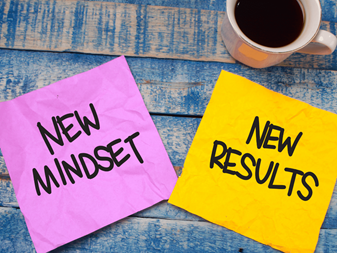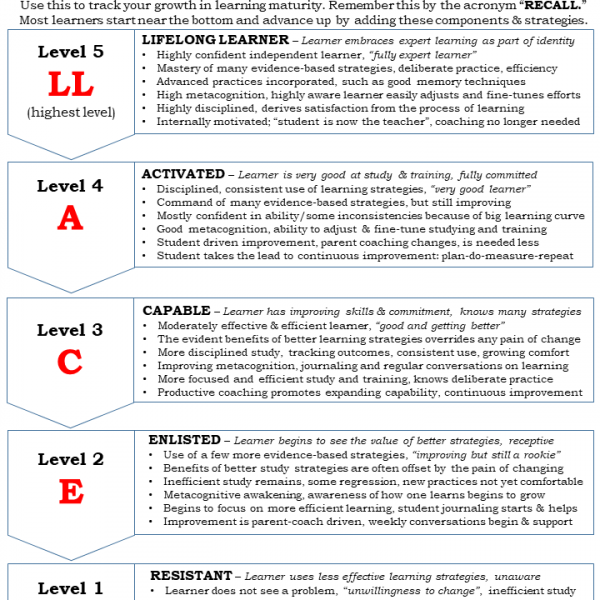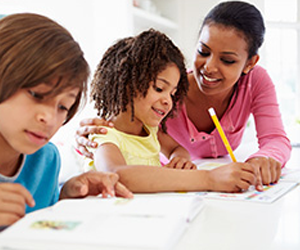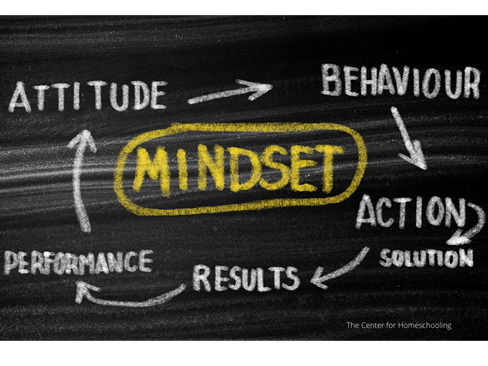
Checklist to Better Learning – Improving Mindsets

Reading time: 10 minutes
The Unstoppable Learner Series
Better Mindsets to Boost Learning
Every parent works hard to encourage your kids to have a positive learning attitude. But other than assertions to have a positive attitude about your learning—what do you talk about? We know a strong and positive mindset is essential to learning. But what does this mean?
There are many activities you can do with your kids to develop a stronger and more durable attitude toward learning. Mindset is an important enabler affecting your child’s daily self-dialogue which reinforces his or her intimate beliefs, attitudes, and feelings about their capabilities to learn and grow. We cannot, of course, overlook that it is an important component of self-motivation and therefore performance. The above graphic points out this relationship.
This checklist provides a useful starting point to promoting a positive learning mindset in your kids. Completing it can help you find new ideas and better actions to further improve your child’s learning power. The path to the destination to unstoppable learning begins with better mindsets and strategies.
Learning Dimension One: Learning Mindsets
This checklist covers the first learning dimension of the eight learning dimensions that explore how to bring out the unstoppable learner in every child. With it, you can examine your family’s mindsets about learning. Better mindsets have the potential to greatly improve your child’s ability to learn and thrive even under setbacks.
“Mindset” {noun}
A set of beliefs or a way of thinking that determines one’s behavior, outlook, and mental attitude.
Use this checklist as a starting point. It’s intended to stimulate your thinking and pave the way for conversations about how you can encourage better mindsets. Don’t treat it as an evaluation of you or your child because this has the negative thinking you are trying to “fix” something. We don’t fix learning mindsets–we make them better. Instead, make this a starting point as part of your efforts to find opportunities for improvement. Set the bar high and seek opportunities to become much better learners.
Better mindsets can have a magical effect on learning!
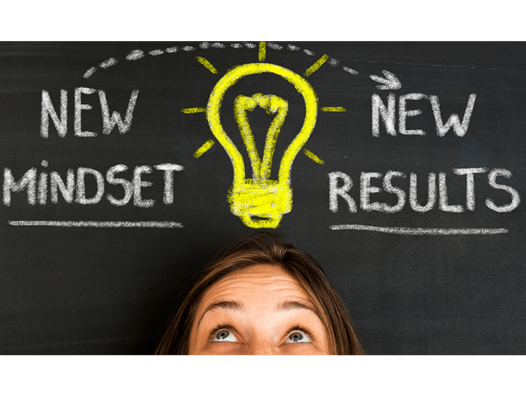 Directions for Completing the 14 Statements
Directions for Completing the 14 Statements
 Read each statement carefully and check (√) only the statements that accurately describe your child or capture what you do now. Leave blank those statements that are not good descriptors or don’t describe your situation. When you are “uncertain” about a statement, leave it blank. Unchecked statements are not negative but represent practices you can examine and improve. Think of unchecked boxes as something positive as they pinpoint where you can get better at mindsets. Be aware of the natural tendency of a parent to overrate mindsets as this can obscure an important thing you might want to work on.
Read each statement carefully and check (√) only the statements that accurately describe your child or capture what you do now. Leave blank those statements that are not good descriptors or don’t describe your situation. When you are “uncertain” about a statement, leave it blank. Unchecked statements are not negative but represent practices you can examine and improve. Think of unchecked boxes as something positive as they pinpoint where you can get better at mindsets. Be aware of the natural tendency of a parent to overrate mindsets as this can obscure an important thing you might want to work on.
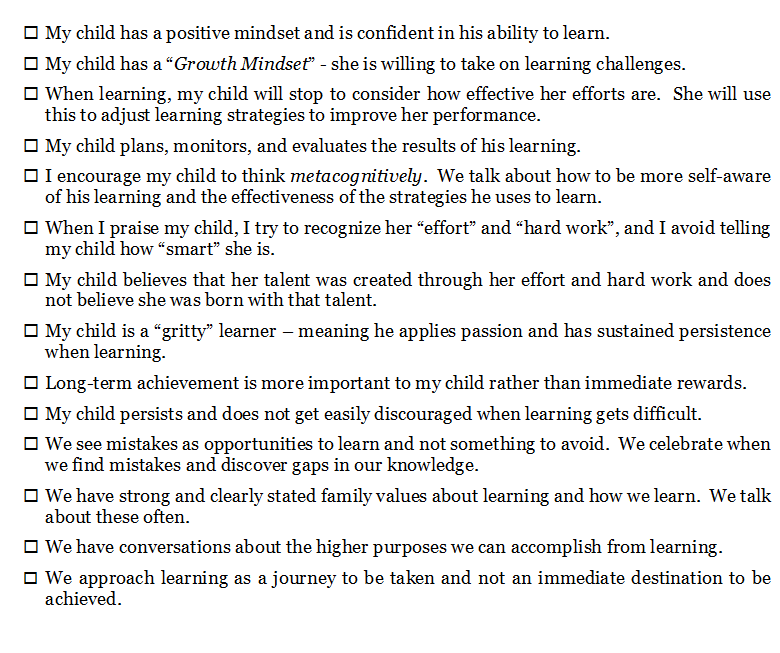 Click here to download this list
Click here to download this list
Scoring Key
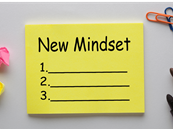 If you checked 11 or more of the above, your child has a well-developed mindset, and your family likely does a good job encouraging metacognitive thinking. If you checked six to ten, you have positive mindsets – but also some work to do. If you checked five or fewer, educate yourself on mindsets and get to work improving them. Remember, there are no poor or bad scores in this checklist, but only actions you have identified to get better! Knowing is power.
If you checked 11 or more of the above, your child has a well-developed mindset, and your family likely does a good job encouraging metacognitive thinking. If you checked six to ten, you have positive mindsets – but also some work to do. If you checked five or fewer, educate yourself on mindsets and get to work improving them. Remember, there are no poor or bad scores in this checklist, but only actions you have identified to get better! Knowing is power.
Explanation
Use these points to enrich your understanding and to expand your knowledge of better mindsets.
- Empirical research on mindsets has indicated they can influence individual achievement, including academic success. Good mindsets matter when it comes to learning. But sometimes learning can be hard, and we can experience failure from it. From these experiences, some develop positive mindsets, while others react by forming less productive mindsets. We can be motivated to change our mindsets once we understand their importance to learning.
- The good news is you can influence and change your mindsets. But to do this, first, you have to know the mindsets you have now. Rating these statements helps you do this. Which mindsets are productive and help you learn more rapidly, and which ones get in your way? Ongoing conversations on mindsets can help your kids discover more positive ones. If you don’t talk about mindsets, or have only infrequent conversations about them, you lose the ability to influence better ones. This can lead to a default mode of reactive thinking about learning, with little improvement to the ability to learn.
- Children who understand they can make their brains get smarter—who have what we call a growth mindset—do better in school because they have an empowering perspective on learning. They focus on improvement and see their effort as a way to build their abilities. With this mindset, they see failure as a natural part of the learning process, and they use it to help them identify blind spots and information they need to learn.
- Fixed mindset, a term coined by researcher Dr. Carol Dweck, is the opposite of growth mindset. With it, the child believes the talent she has is due to innate factors she was born with. Learners with a fixed mindset are less resilient when confronted with learning failures and setbacks. They are less inclined to see hard work as the source of their talent. They tend to avoid failure while learning because it conflicts with their perception of self.
- Praising your child’s effort and hard work reinforces the thinking behind a growth mindset. It’s a good idea to direct your positive feedback and rewards toward hard work, effort, and commitment. Conversely, when you provide praise that rewards how “smart” your child is, you are inadvertently promoting a fixed mindset and the thinking that talent is innate and not gained through effort.
- The mindset of Grit, a term coined by psychologist Angela Duckworth, is another one to nourish. In education, ‘grittiness’ is defined as a combination of your passion for learning, perseverance at task completion, and commitment to purposeful activities. Thomas Reeves, professor emeritus at the University of Georgia, states this is the missing piece for learning and places it beside the affective and cognitive domains as the triad for intelligence, much as was believed in Aristotle’s day.
- The term Metacognition describes the activity of thinking about your thinking. It’s often overlooked as something you need to coach your children to do. It’s important because effective learners do it- they know how to reflect on their learning and have a high awareness of their learning processes. This allows adjustment and fine-tuning of their learning efforts and enables them to select the best strategies for learning that subject. It’s an acquired skill you encourage through your ongoing conversations with your kids about what’s going on in their minds as they learn – in the classroom and with independent study.
- Mistakes are an inevitable part of learning. But the prevailing message most of us hold is that mistakes are bad and something we should avoid. While this is true with work and projects, when it comes to learning, you need a different mindset. A good place to start is to start celebrating mistakes that kids make in the classroom, as long as they learn from the experience. Link these two ideas together: Mistakes = Learning. When you incorporate this into your mindset, you also are improving Grit.
- One of the most common objections from kids is “Why do I have to learn this? I’ll never use it in the real world.” It’s something you likely have heard many times. This means the child does not understand that learning things now will help them learn more things in the future. This is because learning creates a matrix of information that makes it easier to attach new knowledge to it. Learning one subject will help you learn additional subjects. But it is often not evident, at the time we learn something, how we will use that information in the future. For example, students who have music training find it easier to learn how to program code later. Talk about building strong frameworks of information now so you can learn more about what you want to in the future.
- The mindset of goal orientation can become a distraction to learning. Again, what is useful in the world of work, can be a distraction to learning. It’s much better to encourage thinking about the journey Why? Many worthwhile things will take a while to learn and when you don’t see immediate results this can be discouraging, or worse, cause you to quit because of frustration. For example, if you want to study Spanish as a second language, it will take a few years before you get good at it. If you are only motivated by getting immediate results, you may find this task a real grind. When you cultivate joy in learning for the sake of learning, the effort provides its own rewards while the destination awaits. Better learners experience a Zen-like satisfaction from the experience of building your brain.
- How strong are your messages about the value of learning? You can strengthen your commitment to learning by formalizing and publishing your family values about learning. Sit down and together build a list of affirmative statements that describe what we do when we learn and why we do it. Then post it on the wall as a reminder.
“Twenty years from now you will be more disappointed by the things you didn’t do than by the things that you did do. So, sail away from the safe harbor. Explore. Dream. Discover.” – Mark Twain
“The mind is a powerful thing. It can take you through walls.”– author motivational expert, Denis Avey
“If parents (or teachers) want to give their children a gift, the best thing they can do is to teach their children to love challenges, be intrigued by mistakes, enjoy effort, and keep on learning.”– Dr. Carol Dweck, Growth Mindset
Case Example of Mindsets in action: The Tortoise and the Hare
Remember the story of the tortoise and the hare?
The hare was so certain that he would win that he sat down and went to sleep during the race.
The tortoise just plodded on and kept going, always thinking that he had a chance of winning. When the hare woke, he started running as fast as he could, but he was just too late: the tortoise had won.
The hare had a fixed mindset. He believed that his innate ability would always mean that he would win whatever he did.
The tortoise had a growth mindset. He believed that he needed to work hard and keep going if he were to win. He was also not afraid of failure or he would never have agreed to race the hare.
More Resources to Continue Your Conversations
- Do you have grit? Click here to take Duckworth’s Grit Scale to find out.
- To learn more about metacognition, watch this short video: https://www.youtube.com/watch?v=elZFL4FLVLE
- Watch this video on Growth Mindset with Dr. Carol Dweck: https://www.youtube.com/watch?v=hiiEeMN7vbQ
- Watch this animated video together on Fixed and Growth Mindsets: https://www.youtube.com/watch?v=M1CHPnZfFmU
- Watch this animated short video on Grit and talent: https://www.youtube.com/watch?v=sWctLEdIgi4
- Watch Dr. Angel Duckworth talk about Grittiness: https://www.youtube.com/watch?v=H14bBuluwB8



